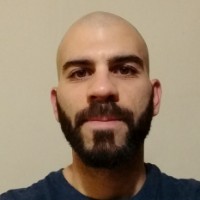An outstanding open problem in neuroscience is to understand how neural systems are capable of producing and sustaining complex spatiotemporal dynamics. Computational models that combine local dynamics with in vivo measurements of anatomical and functional connectivity can be used to test potential mechanisms underlying this complexity. We compared two conceptually different mechanisms: noise-driven switching between equilibrium solutions (modeled by coupled Stuart-Landau oscillators) and deterministic chaos (modeled by coupled Rossler oscillators). We found that both models struggled to simultaneously reproduce multiple observables computed from the empirical data. This issue was especially manifest in the case of noise-driven dynamics close to a bifurcation, which imposed overly strong constraints on the optimal model parameters. In contrast, the chaotic model could produce complex behavior over an ampler range of parameters, thus being capable of capturing multiple observables at the same time with good performance. Our observations support the view of the brain as a non-equilibrium system able to produce endogenous variability. We presented a simple model capable of jointly reproducing functional connectivity computed at different temporal scales. Besides adding to our conceptual understanding of brain complexity, our results inform and constraint the future development of biophysically realistic large-scale models.
P#268
Noise-driven multistability versus deterministic chaos in phenomenological semi-empirical models of whole-brain activity
Juan Ignacio Piccinini
- Buenos Aires,
- Argentina
- Juan Piccinini ¹
- , Yonatan Sanz Pearl ¹
- , Enzo Tagliazucchi ¹
- 1 Buenos Aires Physics Institute and Physics Department, University of Buenos Aires, Buenos Aires, Argentina

